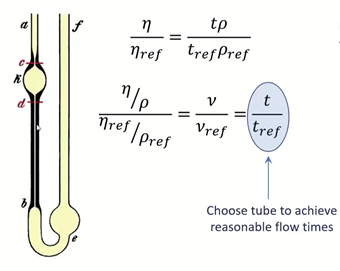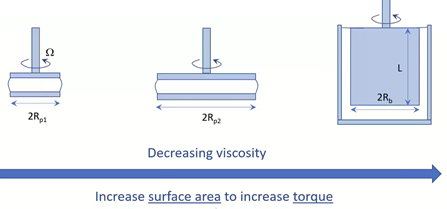Why can’t I use one tool for collecting all my viscosity data?
This is a question we encounter frequently. Choosing the right tool for the job is not just something we encounter in the lab. Think of the time you spend in the kitchen, we have bread knives, carving knives, butter knives and they all do very different and very specific jobs when we are cooking (or eating). You don’t use the same knife to butter your bread as you do to chop your vegetables and this same idea holds true for rheology. (analogy credit to Dr. Zachary Imam!)
When it comes to viscosity measurements, a specific range of tools is used for specific range of samples that depend on the sample viscosity and shear rates you are testing at. Proper tool selection is essential for collecting viscosity data of your sample.
There are many viscometers and rheometers on the market, but we are going to focus on the three tools we see used and discussed frequently: rotational rheometer, capillary viscometer, and the rectangular slit viscometer – specifically RheoSense VROC® viscometers.
When it comes to selecting the right rotational rheometer (parallel plate, cone and plate, or cup and bob) for your sample measurements you must consider geometry and dimension. In these rotational rheometers, the rotation of tool about an axis to generate flow field in your fluid. With these rheometers angular displacement (rotation angle/ rate of rotation) and torque are the properties used to determine viscosity, where one is controlled and the other is measured. You must choose appropriate geometry and dimensions for your samples, considering appropriate diameter and gap, diameter and angle or wall (single vs. double in the cup and bob viscometer).
When measuring your samples on a rotational rheometer there is an operating window for torque and it’s important to select a tool that will best to allow you to explore as much of that space as possible for your specific sample. When working with highly viscous samples, you want to select an instrument with smaller surface area and with lower viscosity samples, you want to select an instrument with more surface area to increase the torque and optimize the operating window.
When it comes to selecting the right capillary viscometer for your sample measurements you must consider dimensions. In these capillary viscometers, you are measuring the gravity driven capillary flow of your sample, specifically the time it takes the sample in the reservoir to move from the start mark (c in diagram below) to the stop mark (d in diagram below). The time it takes your sample to flow from start to stop mark is related to kinematic viscosity. It is important to choose a tube that will allow you to achieve reasonable flow times for your samples. If you are working with a Ubbelodhe viscometer you are able to choose your tube based on your anticipated viscosity range.
VROC (Viscometer-Rheometer-on-a-Chip) technology combines microfluidic and MEMS (Micro-Electro-Mechanical Systems) technologies to measure dynamic viscosity over a wide dynamic range of operation. Similar to the rotational rheometer in controlled and measured properties, VROC viscometers control the flow rate of your sample and measures pressure to calculate shear rate and stress. There are multiple models of our VROC® instruments:
- microVISC™: portable, battery operated, small sample viscometer ideal for routine viscosity measurements
- microVISC-m™: portable, battery operated, small sample viscometer ideal for routine oil viscosity measurements
- m-VROC®: automated, small sample viscometer with the widest dynamic range (high shear rate viscosity measurements up to 1,400,000 s-1)
- e-VROC®: capable of measuring apparent extensional viscosity, measures the extensional flow of polymer solutions
- hts-VROC®: automated, small sample viscometer with the added capability to measure at temperatures as high as 105 °C
- VROC® initium one plus: leading automatic viscometer that measuring true viscosity with the highest accuracy and repeatability, quantifying particle-particle interactions and protein stability
When it comes to measuring your samples, the channel depth of the instrument you use will determine your shear rate range. There are also different VROC® chips to select from for different flow channels. The different VROC chips that pair with each instrument have different pressure ranges they can withstand. The first step in selecting the right VROC chip is to determine the kind of experiment you want to run:
- Shear rate sweep
- Temperature sweep
- Intrinsic viscosity
Our VROC chips need viscosity and shear rate in balance and the A05 chip is ideal for low viscosity fluids and intrinsic viscosity measurements whereas the E02 chip is ideal for high viscosity & high shear rates.
Learn more about selecting the right chip for your VROC instrument and samples
If you want to learn more about selecting the right instrument or chip for your samples, contact us to speak with one of our rheology experts today!
Written by: Eden Reid, RheoSense Senior Marketing Associate





